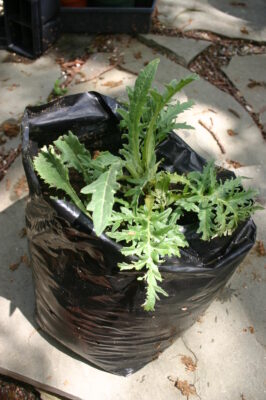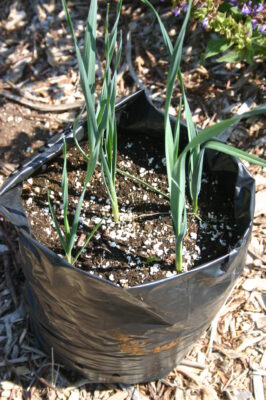
If you enjoy the taste of fresh vegetables but do not have a garden or if your garden is your greenhouse, patio, sunroom, gazebo, or solarium, growing fresh vegetables and fruit might seem impossible. But there is a way to do it. All you need do, is grow in pots. This has an advantage over regular gardening, in that unlike a garden, the soil in pots can be adjusted to exactly suit the plant you want to grow. For example, to grow carrots you will need sandy, light soil. The grow brassicas you will need soil high in nutrients.
Your pots should also be suitable for the plant you want to grow. For example, to grow carrots you need a deep pot, probably 18” to 24” (about 0.5 to 0.7M) deep filled with a mixture of sand, vermiculite, perlite and compost. This mixture should be kept fairly moist for good growth. To grow lettuce, I use a long narrow pot, about 3’ to 4’ (about 1M) long and about 6” (about 30 cm) wide that can hold six to eight heads of lettuce. This type of long, narrow planter can also be used for herbs such as parsley, chamomile, and even garlic.

If you crave new potatoes, set a few seed potatoes in an 18” (.5M) deep Growbag with an inch or two of soil over them. As the potatoes grow, keep filling the pot with soil. Eventually the entire pot will be filled with potatoes and soil. To harvest, simply tip the pot over.
If you plan to grow your own garlic, plant single cloves spaced 4” apart, in a pot in September or October and leave it outside for the winter months. In spring the garlic will sprout, and each clove will grow into a head of garlic. Garlic is a heavy feeder, and you should fertilize regularly. Begin with high nitrogen fertilizer in fall and spring, then switch to fertilizers with higher levels of phosphorus, potassium and sulfur as the bulbs form.
In grocery stores leeks are quite expensive. Leeks can be started from seed indoors and planted into outdoor pots after the last frost. Like garlic, Leeks are heavy feeders so you should fertilize them well.

If you enjoy snap, snow or green peas, green or yellow beans, or cucumbers, you will need a sturdy pot that can hold a trellis. A pot set against a wall to hold the trellis works best. Remember though, your trellis will need to be firmly fixed. The weight of a few plants and their fruits can be quite heavy.
Peppers are ideal plants to grow in pots, but they require full sun and lots of heat. Peppers may need some form of support if the plants grow very large. Under the right conditions, pepper plants can be perennial. so moving them into a heated greenhouse for the winter months can keep them growing.
Tomatoes are always a favorite plant to grow in pots. You can grow some of the plants especially developed for growing in a pot. These plants tend to stay small and produce a lot of small tomatoes. For larger plants and heavier yields, a large, heavy pot will be needed. I can barely lift the pot I use for growing tomatoes. It is heavy enough to hold a trellis and a large plant without falling over… well, most of the time! I use a hand cart to move it into the greenhouse where it will often keep producing until year’s end.

Herbs are another option for growing in pots. You can grow many herbs in pots that might not survive in the garden. For example, I grow rosemary, bay, lemongrass, ginger, galangal, curry plants and others in pots. They live on the patio in summer and in the heated greenhouse in winter.
Growing plants in pots gives you a chance to enjoy more of your favorite plant without having a garden or an allotment. All you need is seeds, water, soil and patience.


